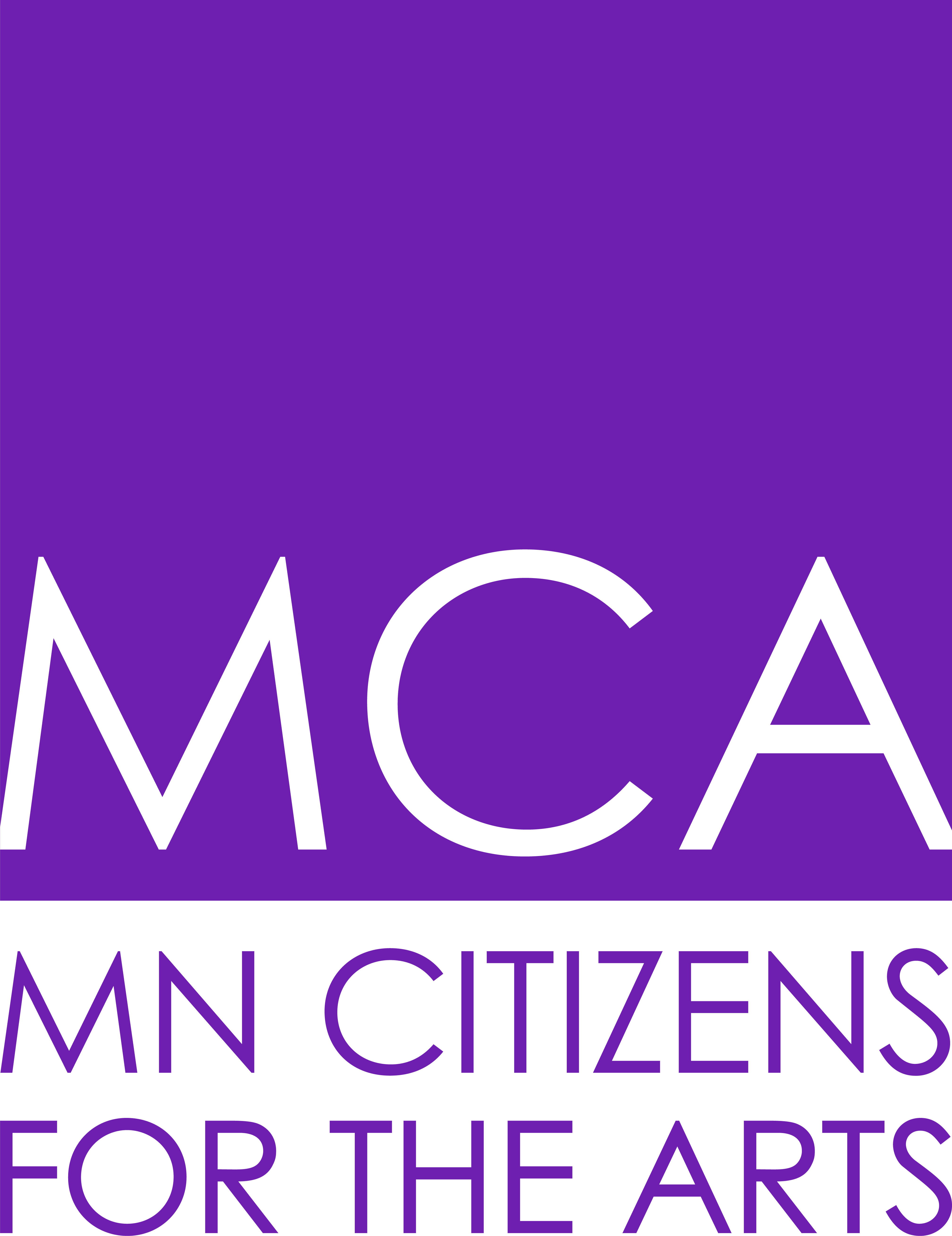THE ELECTIONS AND THE ARTS - WHAT DO WE KNOW?

Election Day is just four weeks away and voting has begun. Check out all of the ways you can find out what candidates think of the arts and public funding for the arts.
CONTENTS:
1. WHAT DO YOUR LEGISLATIVE CANDIDATES SAY ABOUT THE ARTS?
2. STATEMENTS FROM CANDIDATES FOR PRESIDENT AND VICE PRESIDENT ABOUT THE ARTS
3. FIND OUT IF YOUR SCHOOL IS OFFERING ACCESS TO THE ARTS
4. HOW DO I VOTE?
5.CONGRATULATIONS TO STATE FAIR AWARD WINNER CHAD MANDERS
1. WHAT DO YOUR LEGISLATIVE CANDIDATES SAY ABOUT THE ARTS?
What do legislative candidates think of arts funding? The MCA Candidate Questionnaire has gone live! Check it out at http://artsmn.org/learn/the-legislature.
2. STATEMENTS FROM CANDIDATES FOR PRESIDENT AND VICE PRESIDENT ABOUT THE ARTS
President Trump proposed each year of his term to eliminate all arts and culture funding. On a bi-partisan basis, Congress not only preserved arts funding but increased it slightly. What do Joe Biden and Kamala Harris say about the arts?
 Joe Biden: 8.18.20
Joe Biden: 8.18.20
“The future – who we are, lies in the arts. It’s the expression of our soul. We have to reclaim the soul of this country and build on it.”
Kamala Harris on Joe Biden support of the arts: 9.29.20
"In his career he cosponsored legislation to actually establish the Smithsonian Museum of African American History and Culture and the American folklife center to promote American folklife and then obviously to promote all that is important to remember and never forget the history and contributions of African Americans.
 Kamala Harris on her support for funding the NEA, PBS and an American Latino Museum:
Kamala Harris on her support for funding the NEA, PBS and an American Latino Museum:
"In the Senate I have fought against proposed cuts to the NEA -I could talk about what I think of them but I have fought against them," Harris continued. "And also I actually cosponsored a bill to establish a national American Latino museum. In our administration -again we got a lot to do these next 35 days- we'll show that same kind of leadership. And so it's going to be not only about the support for the recovery efforts for the arts community because that is a very big part of what we must focus on from the pandemic and all of its effects. But also moving forward what we need to do to support funding for cultural institutions like PBS and the National Endowment for the Arts."
On Arts Inspiration "seeing what can be unburdened by what is."
Shepard Fairey who asked her, "who do you look to as far as artists go for hints of how things might be shifting and what inspiration do you take from that? How does that affect you?"
Harris thanked Fairey and said "one obvious person, you. I love many things about your art and your talent and your gift but part of what I look to is inspiration that is aspirational. I think that's so important. And I guess it gets back to the point that I was making earlier about seeing what can be unburdened from what has been."
Harris went on to mention Elizabeth Catlett as another favorite "who was an artist, who was a sculptor and also a Howard graduate. So, I say that as a point of pride."
Catherine Opie asked: "I was wondering if you could share with us a moment when you felt a portrait or work of art affected you in a certain way."
Harris said … that she went to college in DC at Howard University. She described how if she had an off day she would like to go to the National Portrait Gallery, where one day a couple years ago she saw the Amy Sherald Michelle Obama portrait. "I was very moved by that one. She captured the former first lady, the forever Michelle Obama. She did all of those things that especially for women some people don't understand can all be in one package. She captured her strength. She captured her elegance. She captured her poise and grace and beauty and presence." She also said "I love Van Der Zee's -all of those photographs of Harlem in its heydays.”
3. FIND OUT IF YOUR SCHOOL IS OFFERING ACCESS TO THE ARTS:
CREATIVE MINNESOTA’S ARTS EDUCATION DATA PROJECT EXPANDED
.png)
The Arts Education Data Project has just been expanded to all grades K-12, showing what arts courses are being offered in Minnesota schools.
The Arts Education Data Project is a partnership between Creative Minnesota, the Minnesota Department of Education, and the Perpich Center for Arts Education. Its aim is to understand what student access to arts education looks like across the state. It has just been updated with the most recently available data. When the project launched in 2019, only high school data was available; now the online resource shares K-12 data for the first time.
This tool helps schools, principals, superintendents, families and community members learn whether or not their school is providing the state-mandated access to arts courses. They can then advocate for more arts education in their communities. The project also examines whether access to and participation in arts education is equitable across Minnesota and for different groups of students.
The Arts Education Data Project is made possible by data collected by the Minnesota Department of Education. Minnesota law sets requirements for arts education offerings, credits for graduation, and achievement of academic standards in the arts. High schools must offer at least three and require at least one of the following arts areas: media arts, dance, music, theater and visual arts. Elementary and middle schools must offer at least three and require at least two of those arts areas. Students must take one credit in the arts to graduate. Local control in Minnesota means that each school district decides how it will provide arts education to its students.
Unfortunately, over 40% of K-6 schools and a third of 7-12 schools did not report into the system for the 2017-18 school year, which is the most recent available data. This makes it difficult to state how many are meeting or exceeding state requirements. However, we can see that some schools are meeting or exceeding the requirements set in statute and some are not.
According to 2017-18 data:
- Approximately 10 percent of reporting schools indicated that they provide access to three arts areas, as required in statute.
- 84 percent of students attending reporting schools are provided access to one or more arts area.
- The most common arts areas offered are Visual or Media Arts and Music.
As the number of schools reporting this required data increases, our understanding of access to the arts in schools will improve. It is not yet known what percentage of students have access to the three arts areas in their school. It may be that what their school has reported does not meet the requirement, or it may be that the school has not reported in at all.
Visit creativemn.org/mn-arts-education-data/, for the interactive dashboard, where both summary data and details for each reporting school are available.
4. HOW DO I VOTE?
VOTING IN MINNESOTA IS EASY. YOU CAN BOTH REGISTER AND VOTE EARLY OR ON ELECTION DAY NOV. 3, 2020.
This year because of Covid it's even easier to vote and to vote early by mail or in person. Find out where you vote on the Secretary of State’s great election website:
https://www.sos.state.mn.us/elections-voting/
5. CONGRATULATIONS TO STATE FAIR AWARD WINNER CHAD MANDERS
.jpg)
This year’s MCA “Great State of Minnesota Award” at the State Fair went to Chad Manders of Brooklyn Park for the piece called “Quarantine Saint.” He won a big ribbon and $100. Congratulations Chad!
 Facebook
Facebook Instagram
Instagram YouTube
YouTube Twitter
Twitter Home Page
Home Page